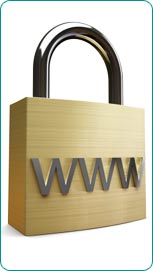Each week, nearly 3500 domains are hijacked from rightful owners. You could easily fall victim to domain theft, which if left unchecked can seriously impact the value of your business. Domain hijacking is the process by which internet domain names are stolen from the rightful registrant. Domain Name Hijacking has been an issue for almost as long as domain names have been around. In 1995 sex.com was stolen from Gary Kremen it’s registrant in a very high profile case. Gary Kremen fought in court for 8 years to get back his domain name.
There is another type of domain hijacking, its called Reverse Domain Hijacking. The term reverse domain hijacking refers to the practice of acquiring domain names from owners by accusing them of violating trademarks with the domain name, and demanding that the domain be transferred. One such case is reported here by KO. PKNIC, the registrar for .pk domains, terminated the domain name djuice.pk without informing it’s owner, and transferred it to Telenor, who has a trademark by the same name.
2008 was a rough year for Godaddy – they were hit hard twice, in February and again in November and December.
 Back in 2007, one of my domains registered with HostNDomain, a Pakistani domain registrar were hijacked by a guy running a desi porn site. I highly doubt the hijacker was an employ of HostNDomain. After 4 days of forceful communication with their support I was able to transfer that domain from HostNDomain to Name.com
Back in 2007, one of my domains registered with HostNDomain, a Pakistani domain registrar were hijacked by a guy running a desi porn site. I highly doubt the hijacker was an employ of HostNDomain. After 4 days of forceful communication with their support I was able to transfer that domain from HostNDomain to Name.com
When registering your domains, always check that your domain registrar offer login tracking/emails, history and IP restrictions. If a kid can hack ebay.de then your domain can also be hijacked very easily.
Here are some tips for domain name hijacking prevention by Brett Lewis, Internet Attorny.
- Always maintain accurate contact information with your registrar or services provider – In the event of a theft, if the Whois information for a domain is inaccurate, it will be difficult for a registrar or service provider to determine who the rightful registrant of the domain name should be. Don’t make things more difficult for yourself by providing phony contact information. If you want to hide your name use domain name privacy.
- Register Your Domains with a Reputable Registrar – There are literally hundreds of registrars to choose from and thousands upon thousands of resellers. (Like in my case with HostNDomain.com, domain was not registered with a reputable company.) Complaints about lack of service and responsiveness at shady service providers abound. If your domain name is hijacked from one of these providers, you may have a difficult time getting anyone to listen. Domain name resellers are not under contract with ICANN and are not directly obligated to follow the same transfer confirmation processes that ICANN requires of registrars. Many do, but there is a greater risk that a reseller will not follow best practices, making it more likely that your domain name can be hijacked. Also look for a registrar that sends a transfer confirmation email prior to transferring a domain name.
- Never Allow your Listed Email Address to Expire – Your email address is the key to unlocking your domain names. Your listed registrant or administrative contact email address can be used at many registrars to reset the controlling user name and password for your account. In addition, under ICANN’s Transfer Policy, a gaining registrar usually obtains the required transfer confirmation through electronic mail, sent to the registrant or administrative contact email address on file for the domain name. If you allow your email address to expire, a hijacker will steal your domain name, provided it’s worth stealing.
- Protect your email address. Protect your email address that you used to register your domain name, a hacker can use your email address to access and transfer your domain name.
- Keep User Names and Passwords Secure – Do not share these with anyone, unless they have an absolute need to know.
- Use a Whois Privacy Service – If your contact information, including your email address, is private, it will be harder to spoof.
- Lock Your Domains – This is self-explanatory. Many registrars offer a “locking” service, and will not allow a transfer of a locked domain.
- Monitor Your Portfolio – Routinely monitor your portfolio for any unauthorized changes. The sooner that a hijacking is discovered, the better chance that you have of recovering your domains. This can also be done through an automated script.
Follow these steps to decrease the chance of your domain names being stolen. These steps may also help you in recovering your domain names if they are hijacked.





I use namecheap.com
They were originally resellers of enom.com, but have become ICANN accredited registrars presently.
They give excellent service. You can Google for their credentials.
Just to spread a good word about good folks!
Cheers!
S.K